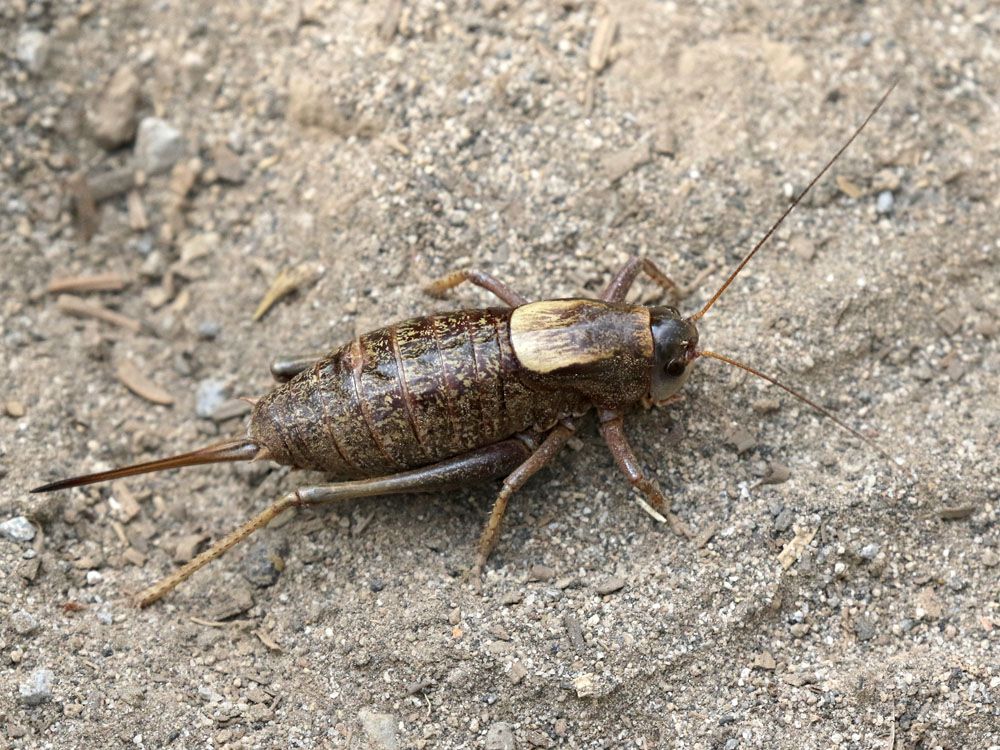
Mormon Cricket – Anabrus simplex
Mormon Cricket- Anabrus simplex
Common Name: Mormon cricket
Latin Name: Anabrus simplex
Appearance:
The Mormon Cricket is a 5-7 cm tall insect. They are typically brown or black and have long, spiny legs. The wings are short and stubby, and the head is large and flattened.
Egg: The Mormon Cricket lays eggs in the soil in late summer or early fall, and the eggs overwinter before hatching in the spring.
Pupae: The pupal stage of the Mormon Cricket occurs in the soil, and the adult emerges in the late spring or early summer.
Larva: The larvae of the Mormon Cricket are similar in appearance to the adults but smaller and without wings.
Adults: The adult Mormon Cricket is a 5-7 cm tall insect. They are typically brown or black and have long, spiny legs. The wings are short and stubby, and the head is large and flattened.
Host plants:
The Mormon cricket feeds on various plants, including grasses, forbs, and crops.
Territory:
The Mormon cricket is found throughout western North America, from Canada to Mexico.
Damages caused by Mormon cricket:
The Mormon Cricket is known to cause significant damage to crops and rangeland. They can consume large quantities of vegetation and strip entire fields or rangeland of vegetation. They can also cause damage to structures and vehicles as they move across roads and highways.
Life history and Habits:
The Mormon Cricket is a migratory species, and large populations can move across large areas for food and suitable habitat. They are typically found in arid and semi-arid regions, and their people can fluctuate widely yearly depending on environmental conditions. The Mormon Cricket is primarily active at night and is attracted to lights. Control measures for the Mormon Cricket include the use of insecticides and the removal of infested plant material.
